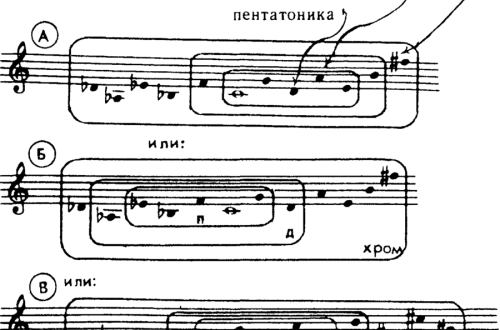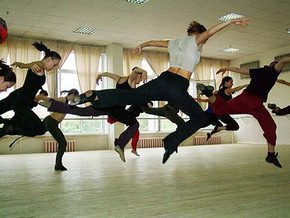The most common forms of musical works
You’ve probably ever come across such philosophical concepts as form and content. These words are universal enough to denote similar aspects of a wide variety of phenomena. And music is no exception. In this article you will find an overview of the most popular forms of musical works.
Before naming the common forms of musical works, let’s define what is a form in music? Form is something that relates to the design of a work, to the principles of its structure, to the sequence of musical material in it.
Musicians understand form in two ways. On the one hand, the form represents the arrangement of all parts of a musical composition in order. On the other hand, form is not only a diagram, but also the formation and development in a work of those expressive means by which the artistic image of a given work is created. What kind of expressive means are these? Melody, harmony, rhythm, timbre, register and so on. The substantiation of such a double understanding of the essence of musical form is the merit of the Russian scientist, academician and composer Boris Asafiev.
Forms of musical works
The smallest structural units of almost any musical work are. Now let’s try to name the main forms of musical works and give them brief characteristics.
Period – this is one of the simple forms that represents the presentation of a complete musical thought. It occurs frequently in both instrumental and vocal music.
The standard duration for a period is two musical sentences that occupy 8 or 16 bars (square periods), in practice there are periods both longer and shorter. The period has several varieties, among which the so-called ones occupy a special place.
Simple two- and three-part forms – these are forms in which the first part, as a rule, is written in the form of a period, and the rest do not outgrow it (that is, for them the norm is either also a period or a sentence).
The middle (middle part) of a three-part form can be contrasting in relation to the outer parts (showing a contrasting image is already a very serious artistic technique), or it can develop, develop what was said in the first part. In the third part of a three-part form, it is possible to repeat the musical material of the first part – this form is called reprise (reprise is repetition).
Verse and chorus forms – these are forms that are directly related to vocal music and their structure is often associated with the characteristics of the poetic texts that underlie the song.
The verse form is based on the repetition of the same music (for example, period), but with new lyrics each time. In the lead-chorus form there are two elements: the first is the lead (both the melody and the text can change), the second is the chorus (as a rule, both the melody and the text are preserved in it).
Complex two-part and complex three-part forms – these are forms that are composed of two or three simple forms (for example, a simple 3-part + period + a simple 3-part). Complex two-part forms are more common in vocal music (for example, some opera arias are written in such forms), while complex three-part forms, on the contrary, are more typical for instrumental music (this is a favorite form for the minuet and other dances).
A complex three-part form, like a simple one, can contain a reprise, and in the middle part – new material (most often this is what happens), and the middle part in this form is of two types: (if it represents some kind of a slender simple form) or (if in the middle part there are free constructions that do not obey either the periodic or any of the simple forms).
Variation form – this is a form built on the repetition of the original theme with its transformation, and there must be at least two of these repetitions in order for the resulting form of a musical work to be classified as variational. The variation form is found in many instrumental works by classical music composers, and no less often in the compositions of modern authors.
There are different variations. For example, there is such a type of variation as variations on an ostinato (that is, unchangeable, held) theme in melody or bass (the so-called). There are variations in which, with each new implementation, the theme is colored with various decorations and progressively fragmented, showing its hidden sides.
There is another type of variation – in which each new implementation of the theme takes place in a new genre. Sometimes these transitions to new genres greatly transform the theme – just imagine, the theme can sound in the same work as a funeral march, a lyrical nocturne, and an enthusiastic hymn. By the way, you can read something about genres in the article “Main Music Genres.”
As a musical example of variations, we invite you to get acquainted with a very famous work by the great Beethoven.
L. van Beethoven, 32 variations in C minor
Rondo – another widespread form of musical works. You probably know that the word translated into Russian from French is . This is no coincidence. Once upon a time, the rondo was a group round dance, in which general fun alternated with dances of individual soloists – at such moments they went into the middle of the circle and showed their skills.
So, in terms of music, a rondo consists of parts that are constantly repeated (general ones – they are called) and individual episodes that sound between refrains. For the rondo form to take place, the refrain must be repeated at least three times.
Sonata form, so we got to you! The sonata form, or, as it is sometimes called, the sonata allegro form, is one of the most perfect and complex forms of musical works.
The sonata form is based on two main themes – one of them is called (the one that sounds first), the second -. These names mean that one of the themes is in the main key, and the second in a secondary key (dominant, for example, or parallel). Together, these themes go through various tests in development, and then in the reprise, usually both are sounded in the same key.
The sonata form consists of three main sections:
- exposition (presentation of the first, second and other topics to the public);
- development (the stage at which intensive development occurs);
- reprise (here the themes presented in the exhibition are repeated, and at the same time their convergence occurs).
Composers loved the sonata form so much that on its basis they created a whole series of forms that differed from the main model in various parameters. For example, we can name such varieties of sonata form as (mixing sonata form with rondo), (remember what they said about an episode in a three-part complex form? Here any form can become an episode – often these are variations), (with double exposure – for the soloist and at the orchestra, with a virtuoso cadenza of the soloist at the end of the development before the start of the reprise), (small sonata), (huge canvas).
Fugue – this is the form that was once the queen of all forms. At one time, fugue was considered the most perfect musical form, and musicians still have a special attitude towards fugues.
A fugue is built on one theme, which is then repeated many times in an unchanged form in different voices (with different instruments). The fugue begins, as a rule, in one voice and immediately with the theme. Another voice immediately responds to this theme, and what sounds during this response from the first instrument is called counter-addition.
While the theme circulates through different voices, the expositional section of the fugue continues, but as soon as the theme has passed through each voice, development begins in which the theme may not be fully pursued, compressed, or, conversely, expanded. Yes, a lot of things happen in development… At the end of the fugue, the main tonality is restored – this section is called the reprise of the fugue.
We can stop there now. We have named almost all the main forms of musical works. It should be borne in mind that more complex forms may contain several simpler ones – learn to detect them. And also often both simple and complex forms are combined into different cycles – for example, they form together.



